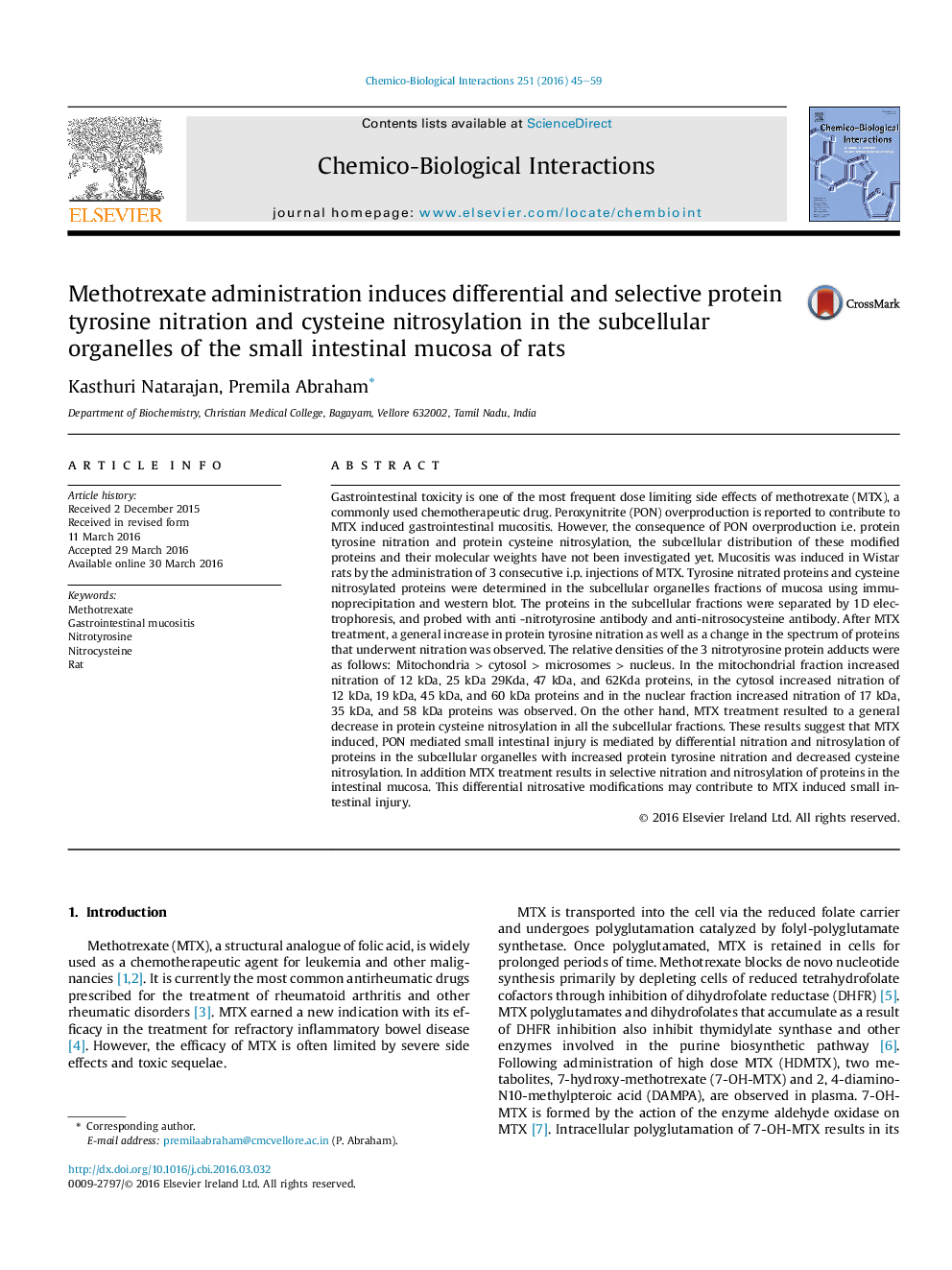| Article ID | Journal | Published Year | Pages | File Type |
|---|---|---|---|---|
| 2579922 | Chemico-Biological Interactions | 2016 | 15 Pages |
•MTX induced mucositis is associated with increased ‘cytotoxic’ tyrosine nitration.•‘Cytoprotective’ cysteine nitrosylation is decreased in MTX treated rat intestines.•Mitochondrial fractions had highest content of 3 nitrotyrosine protein adducts.•Selected proteins in the intestinal mucosa underwent nitrosative modifications.
Gastrointestinal toxicity is one of the most frequent dose limiting side effects of methotrexate (MTX), a commonly used chemotherapeutic drug. Peroxynitrite (PON) overproduction is reported to contribute to MTX induced gastrointestinal mucositis. However, the consequence of PON overproduction i.e. protein tyrosine nitration and protein cysteine nitrosylation, the subcellular distribution of these modified proteins and their molecular weights have not been investigated yet. Mucositis was induced in Wistar rats by the administration of 3 consecutive i.p. injections of MTX. Tyrosine nitrated proteins and cysteine nitrosylated proteins were determined in the subcellular organelles fractions of mucosa using immunoprecipitation and western blot. The proteins in the subcellular fractions were separated by 1D electrophoresis, and probed with anti -nitrotyrosine antibody and anti-nitrosocysteine antibody. After MTX treatment, a general increase in protein tyrosine nitration as well as a change in the spectrum of proteins that underwent nitration was observed. The relative densities of the 3 nitrotyrosine protein adducts were as follows: Mitochondria > cytosol > microsomes > nucleus. In the mitochondrial fraction increased nitration of 12 kDa, 25 kDa 29Kda, 47 kDa, and 62Kda proteins, in the cytosol increased nitration of 12 kDa, 19 kDa, 45 kDa, and 60 kDa proteins and in the nuclear fraction increased nitration of 17 kDa, 35 kDa, and 58 kDa proteins was observed. On the other hand, MTX treatment resulted to a general decrease in protein cysteine nitrosylation in all the subcellular fractions. These results suggest that MTX induced, PON mediated small intestinal injury is mediated by differential nitration and nitrosylation of proteins in the subcellular organelles with increased protein tyrosine nitration and decreased cysteine nitrosylation. In addition MTX treatment results in selective nitration and nitrosylation of proteins in the intestinal mucosa. This differential nitrosative modifications may contribute to MTX induced small intestinal injury.
